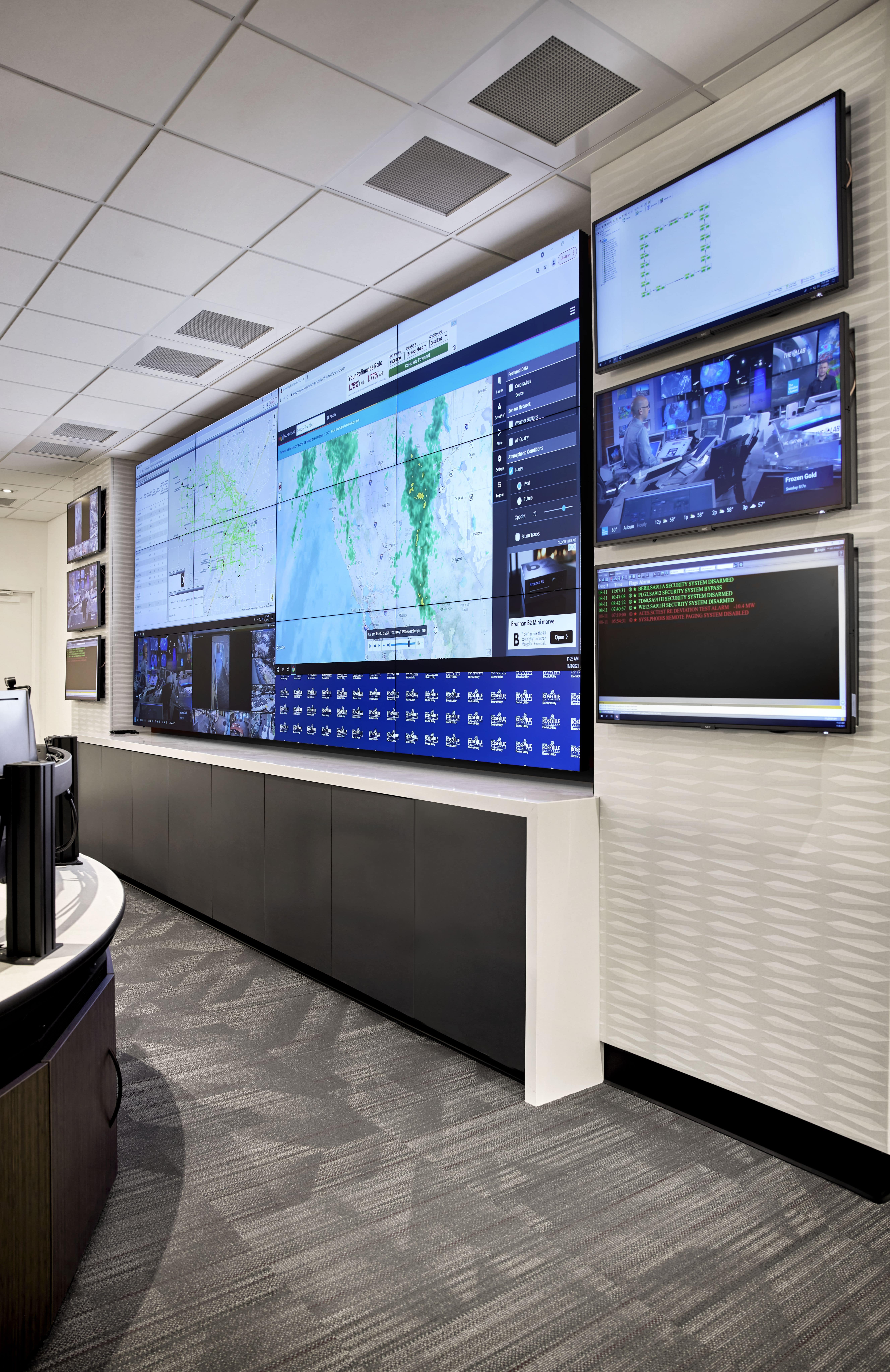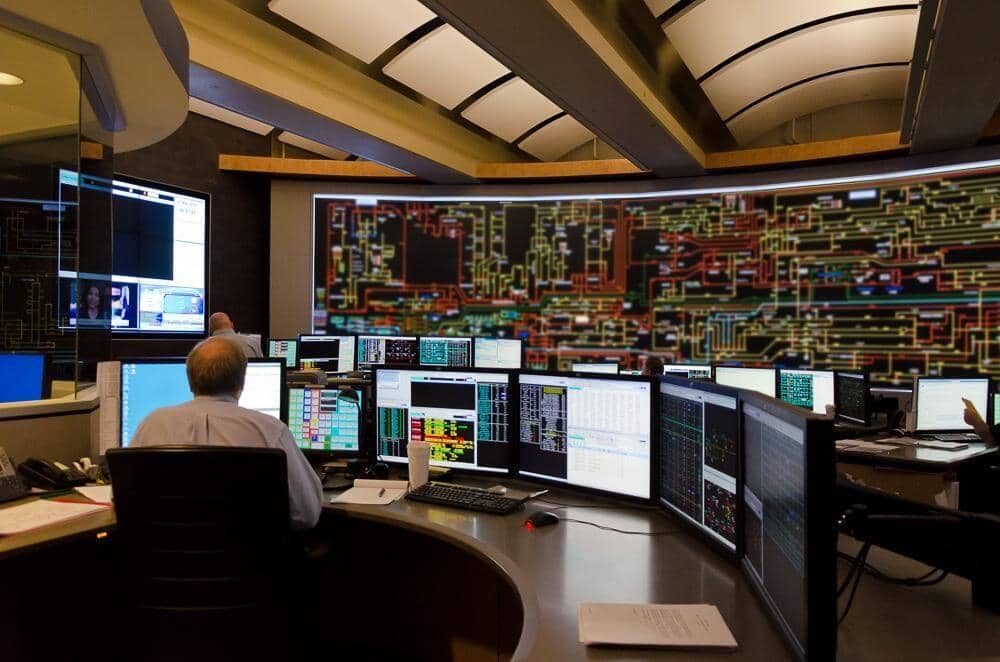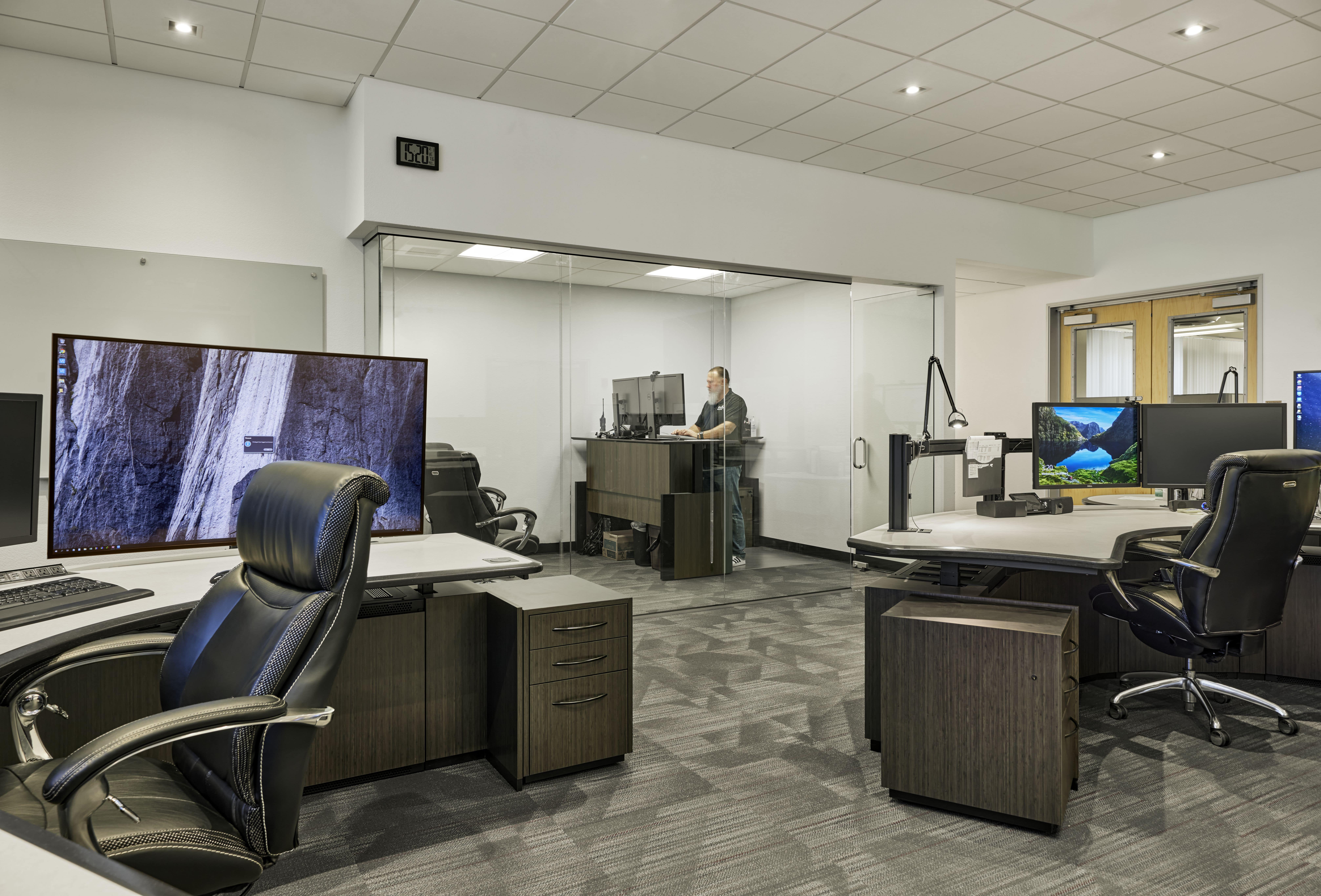If you’re renovating your existing utility command center or building a new space from the ground up, it’s essential to consider control room acoustic design. Unwanted sounds can negatively impact your operators in a variety of ways, so understanding how to reduce noise pollution is very important. In this blog, we’ll review everything you need to know about control room acoustics to help you reduce operator distractions and implement noise control measures in the workplace.
What Are Acoustics?
Simply put, acoustics is the way that individual sound frequencies interact within an enclosed room. Each item, material, and texture affects how sound moves through a space, and every room reacts differently to sound waves based on the objects it contains. Control room acoustics have a significant impact on your operators, so it’s essential to take noise control measures in the workplace.
How Poor Control Room Acoustics Negatively Affect Operators
The ability to focus on essential tasks is key for utility control room personnel, so reducing operator distractions is of the utmost importance. Poor control room acoustics can negatively impact your operators’ decision making abilities, which can have disastrous and far-reaching consequences. There are many sources of noise in utility control rooms, including (but not limited to):
- Video and audio sources
- Operator conversations
- Equipment (e.g. printers, projectors, or servers)
- Alarms
- Foot traffic
Unfortunately, many utility companies fail to consider the significant impact acoustics has on operator performance and overall safety when designing or updating their control room.

Sound & Noise Fundamentals That Impact Control Room Design
In the following sections, we’ll review a few technical fundamentals that you should consider when designing your control room acoustic treatment. Understanding these principles can also help you create and implement a noise mitigation plan that reduces operator distractions.
Airborne & Impact Noise
Noise can be classified into two distinct categories: airborne and impact. Like the name suggests, airborne noise is transmitted through the air via speech, audio and video output, alarms, etc. Sound waves travel through the air and strike an object, creating vibrations that are radiated outwards. If you can hear a sound but don’t feel a vibration when you place your hand on a wall, you’re experiencing airborne noise.
Impact noise is created by the physical effect of sound on buildings or solid materials when they’re struck by footsteps, doors opening and closing, furniture moving, etc. Impact noise causes both sides of the affected building element to vibrate, thereby generating sound waves. If you can hear a sound and feel a vibration when you place your hand on a wall, you’re experiencing impact noise.
Noise Reduction Coefficient (NRC) Ratings
The noise reduction coefficient (NRC) is used to measure how much sound is absorbed by a specific product, material, or surface. As a result, it’s helpful if you’re trying to improve the sound quality of a room and/or reduce echo. Thickness and density are two of the most important factors when it comes to calculating noise reduction coefficients (NRCs).
Noise reduction coefficient (NRC) ratings range from 0-1, with an NRC of 0 indicating that the product absorbs no sound and an NRC of 1 indicating that the product absorbs all sound. For example, a material with a .75 NRC rating absorbs 75% of sound in a space and reflects the other 25%.
Sound Absorption Coefficient
The sound absorption coefficient is used to measure how much sound is absorbed in a room, rather than by a specific product. If you have a large control room, it will take longer for sounds to reflect and reach the ceiling and perimeter walls.
Want to improve your control room’s sound absorption coefficient? Opt for soft, porous materials like carpets, rugs, and ceiling tiles, or specialty control room acoustic treatments like panels and resilient mounts. We’ll take a look at a variety of environmental noise control products later in this blog to help you get started.
Sound Transmission Class (STC) Ratings
Sound transmission class (STC) ratings indicate how much sound will be blocked as it travels through different materials. As such, it plays a key role if you’re trying to reduce the amount of noise entering or leaving your control room. Sound transmission class (STC) ratings run from 25-60+, with 25 indicating that speech can be heard and understood and 60+ indicating that a room has good soundproofing.
Vibration Damping & Isolation
Vibration occurs when force causes the particles of an elastic body or material to move back and forth rapidly before returning to their resting state. Along with degrading utility control room conditions, excessive vibration can create excess noise and cause safety problems.
Two of the most effective ways of controlling vibration and reducing operator distractions in control rooms are vibration damping and isolation:
- Damping dissipates vibrations by absorbing or altering vibration energy and reducing the amount of force transmitted through an object.
- Isolation prevents the transmission of vibrations by preventing that energy from entering an object.
When selecting a vibration control system for your control room, look for wide temperature stability, a long fatigue life, and a good damping coefficient. The latter refers to whether a material will bounce back or return energy to the affected object.

Control Room Acoustic Design and ISO 11064
International Organization for Standardization (ISO) 11064 provides specific ergonomic principles, recommendations, and requirements related to control room engineering and design. Whether you’re revamping your current space or building a new command center from scratch, ISO 11064 should guide your control room acoustic treatment and noise mitigation plan.
Part 6 of ISO 11064 establishes environmental requirements for command centers, including control room acoustics. It provides specific guidelines to help you optimize the overall environment of your control room, thereby improving operator performance and decision making. These protocols cover thermal settings, air quality, lighting, acoustics, vibrations, aesthetics, and interior design.
Reducing Operator Distractions with Ergonomic Design & Human Factors Engineering
Your control room acoustic treatment and noise control measures in the workplace should also be informed by ergonomic design and human factors engineering. We’ll take a closer look at each of these in the sections below.
Ergonomic Design
Put simply, ergonomic design is the practice of designing a space to specifically meet the needs of its inhabitants. Control rooms that are designed with ergonomics in mind will boost the productivity and efficiency of your operators while removing potential discomfort, which is key in 24/7 environments.
Ergonomic design is also proven to help prevent injuries, helping you create a safer environment for your operators. Be sure to incorporate these principles into the design and engineering phase of your control room project to ensure you won’t need to retrofit your space in a few years.
Human Factors Engineering
Human factors engineering accounts for user strengths and limitations when designing interactive systems that involve people, technology, and work environments.
Human factors engineering helps operators mitigate problems quickly and reduces the likelihood (or impact) of major incidents. It also saves you money in the long run since comfortable, safe, and efficient operators are at the root of more profitable utility companies.
Other Ways to Mitigate & Diffuse Noise in Control Rooms
Wondering how to reduce noise pollution in your utility command center? Start by asking yourself the following questions about your current control room acoustics:
- What are the dimensions of my control room?
- Does it have high ceilings?
- How much verbal communication takes place between operators?
- Do operators have to speak loudly over equipment?
- How much video and audio noise is entering the room?
- Are there frequent audible alarms?
- Is there a lot of foot traffic?
Once you’ve answered these questions, you can design the ideal control room acoustic treatment for your utility company.

Acoustic Panels
Acoustic panels have a high pores-per-inch (PPI) rating, making them ideal for control room sound absorption and/or diffusion. Depending on the design of your space, acoustic panels can be mounted to the ceiling, arranged in the middle of the room, or placed between consoles. These products also provide a sleek aesthetic that offers both form and function.
Carpeting
Carpeting the floors of your control room is one of the most effective ways to absorb unwanted sound. It’s also an affordable option that’s a cost-effective solution for large control rooms looking to save money. Soft carpets with thick pads are particularly effective at reducing middle- to high-level impact noise, especially when it comes from above.
Foam
Foam is more cost-effective than acoustic panels (and also works well as a sound diffuser), so it’s an ideal choice for control rooms. Be sure to select foam with a high PPI rating to achieve maximum sound absorption.
Privacy Panels
If you don’t have many convenient places to mount acoustic panels or foam, privacy panels may be the perfect solution. You can use them to absorb sound in the middle of your control room, or install them between individual consoles to block sound and light for increased operator comfort.
Resilient Mounts
Hanging resilient mounts, sound clips, and spring ceiling hangers are very effective when it comes to reducing impact sound from above. These products often require you to replace your existing ceiling, though, so they’re not always the most affordable option.
Resilient Underlay
Resilient underlay is made from materials like rubber, rigid fiberglass, foam, or cork and works similarly to carpet and padding. It’s designed to absorb and isolate impact sound, especially at middle- to high-level frequencies. Depending on its mass, resilient underlay may also provide insulation from airborne sound.
Soundproofing Compounds
Applying soundproofing compounds between two rigid materials (like subflooring) can also be very effective in reducing impact sound. These compounds dissipate the vibrations caused by all sound frequencies as they move through the control room floor and walls. Soundproofing compounds can also be an effective way to dampen airborne noise.


